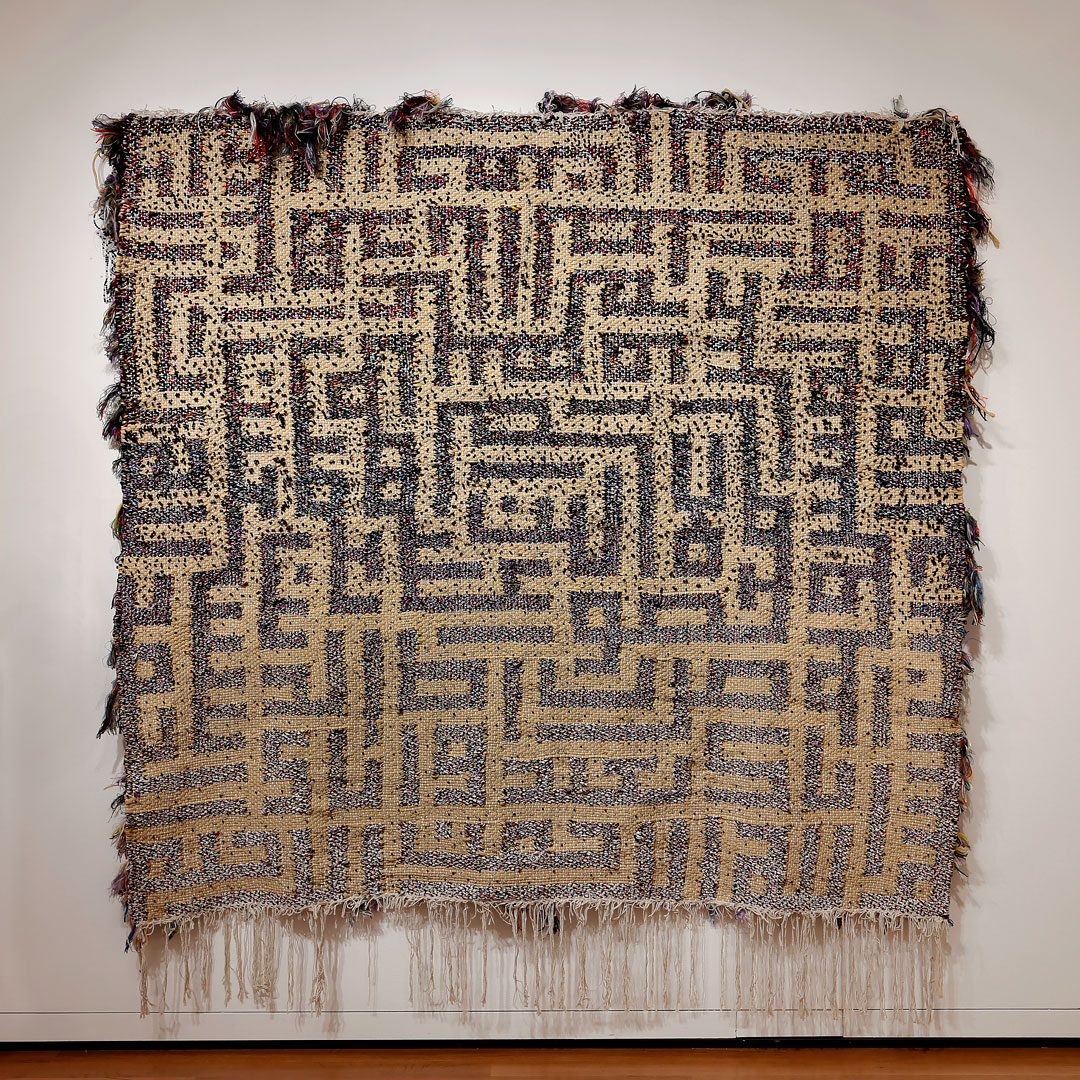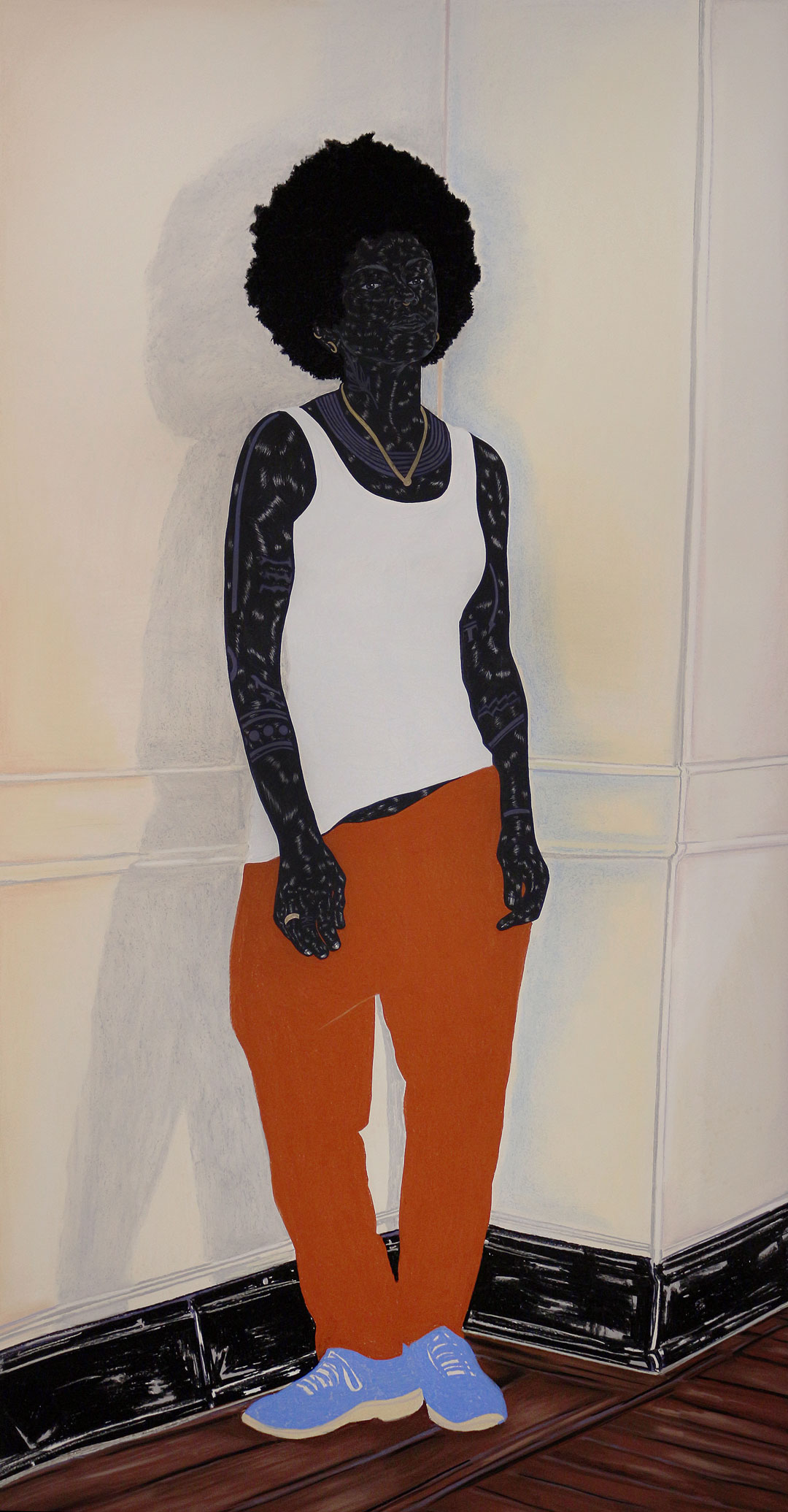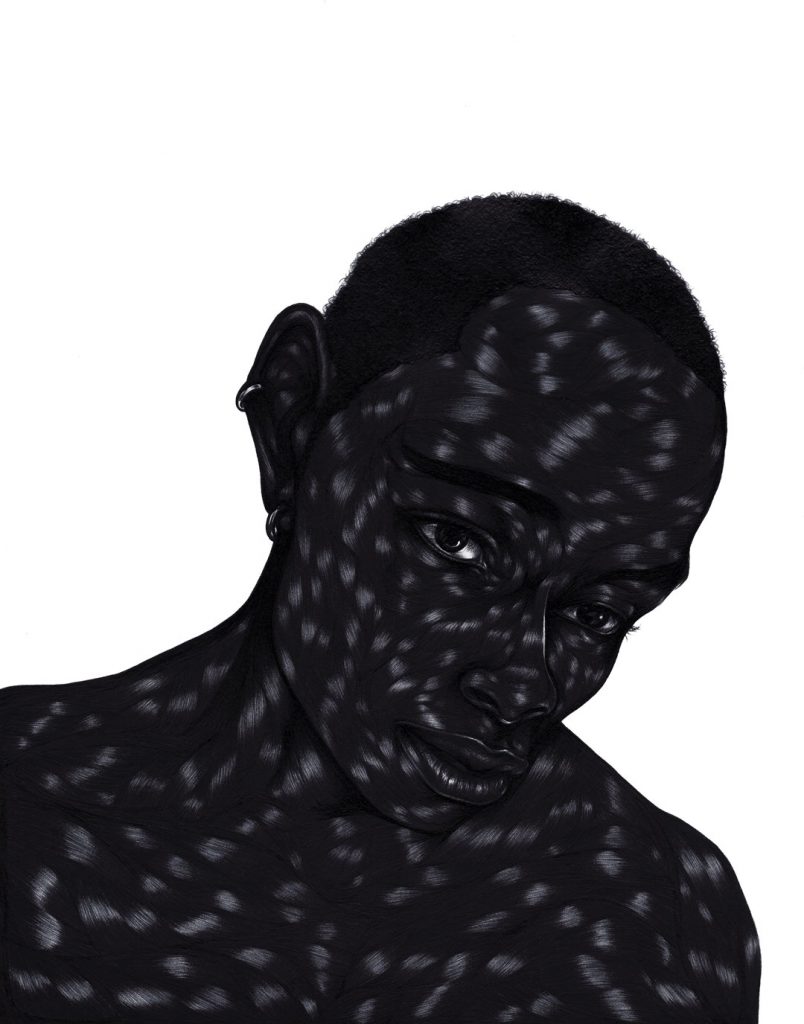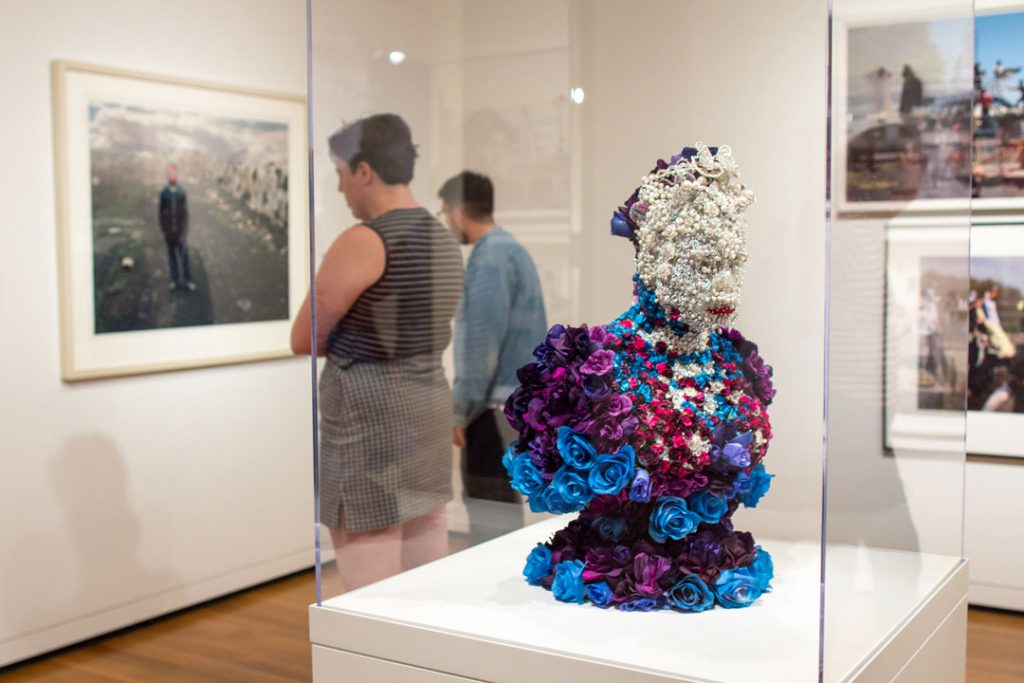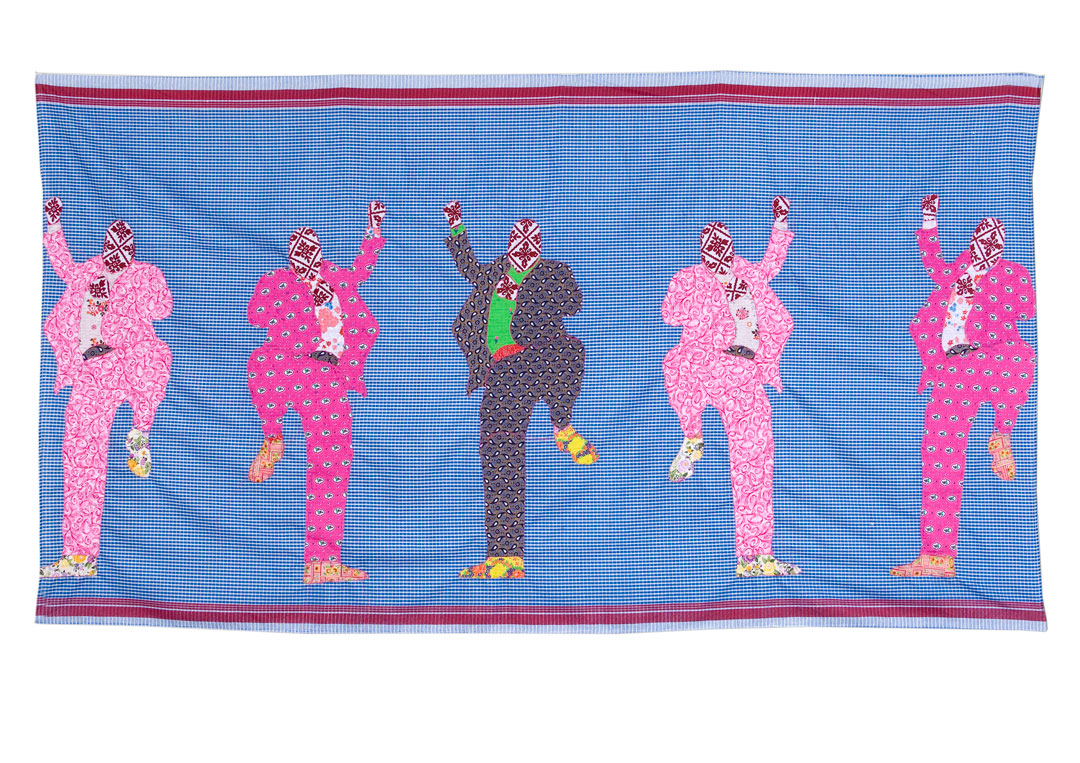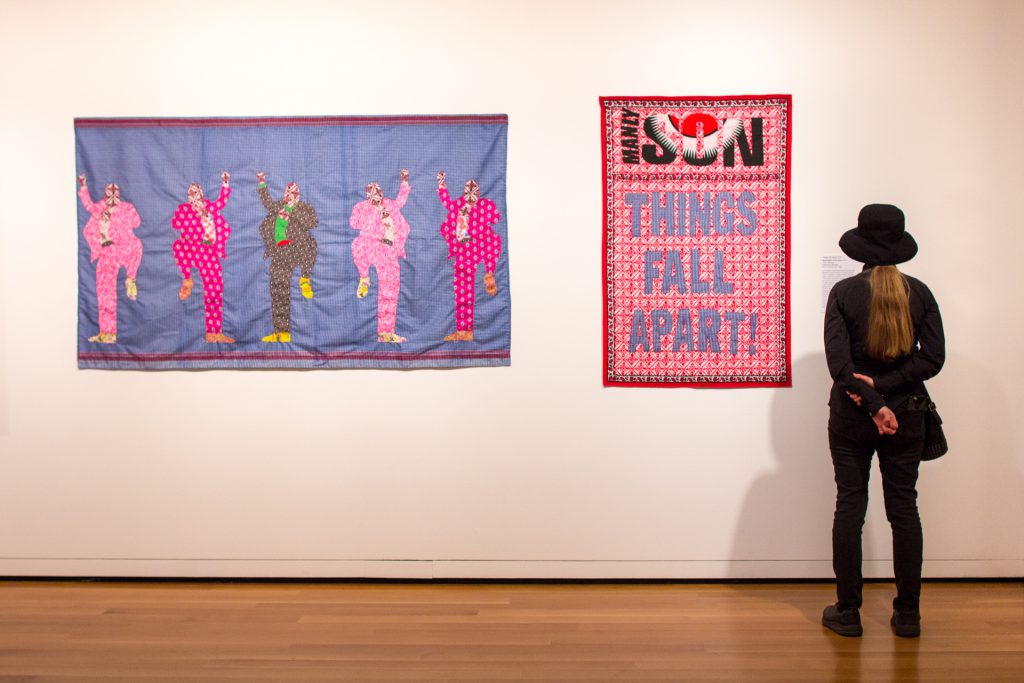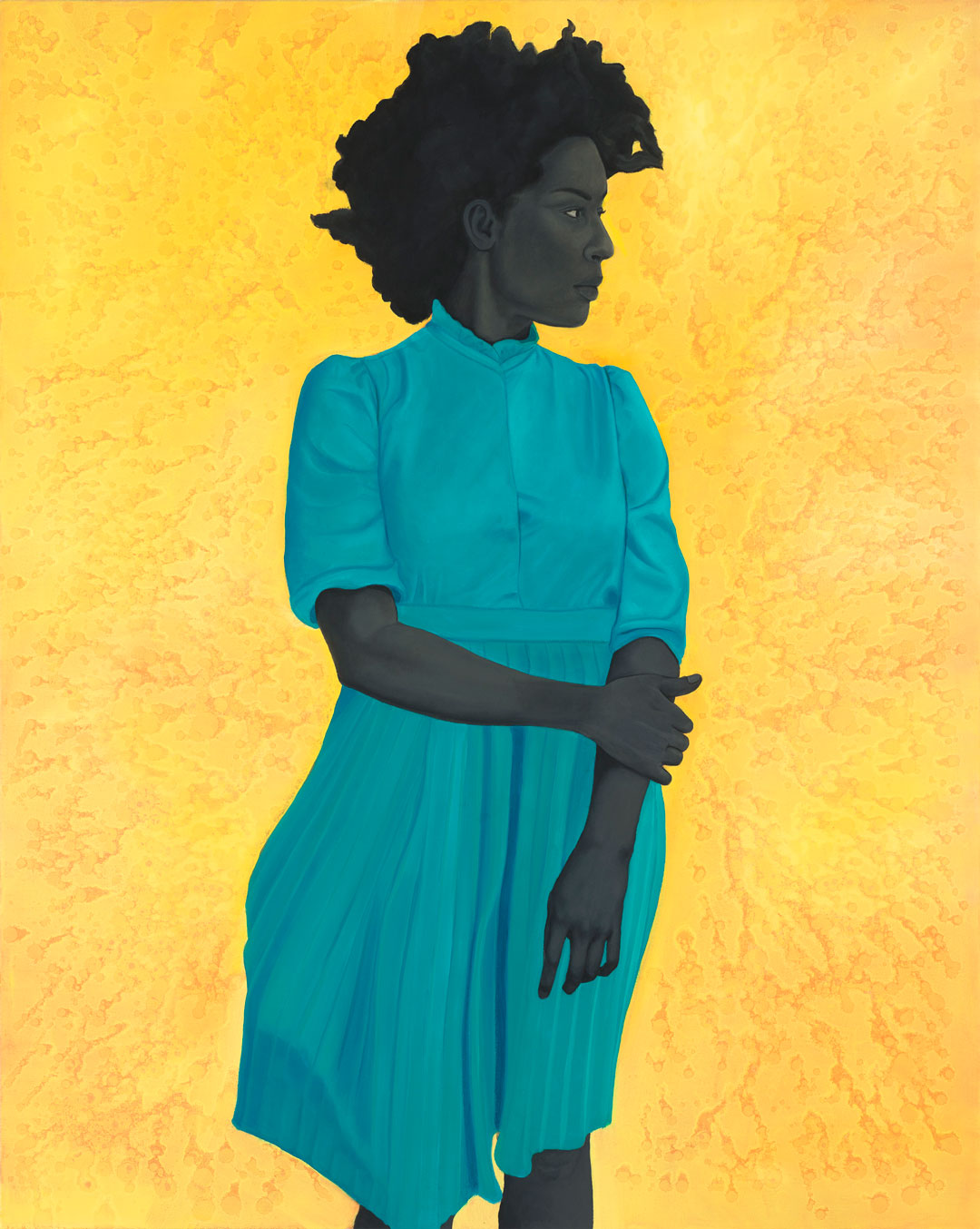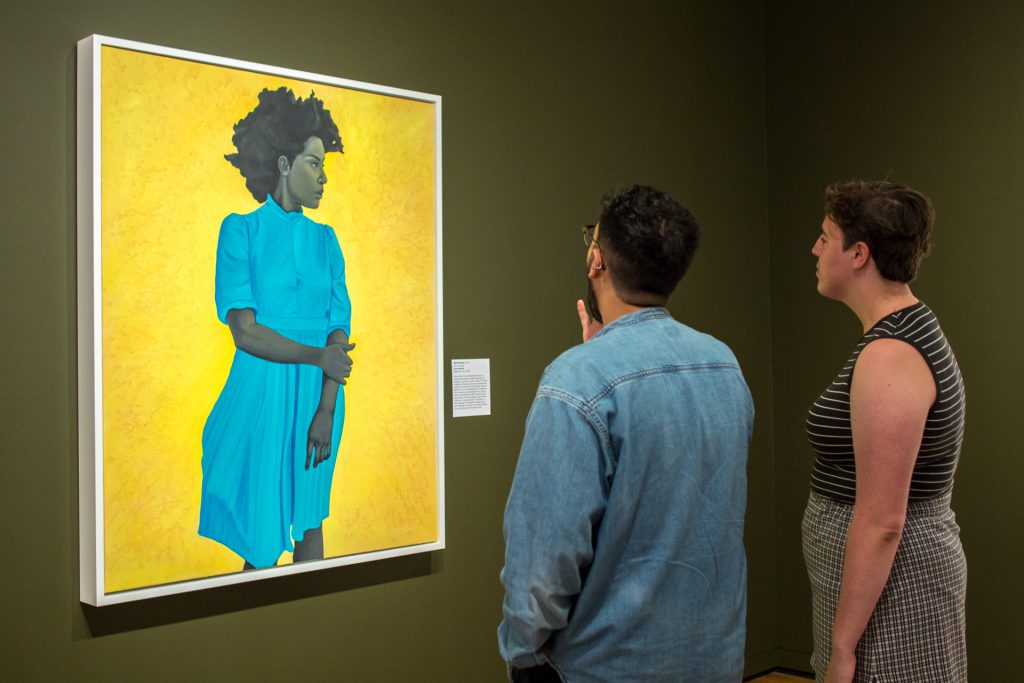Igshaan Adams’s tapestry
In This Imperfect Present Moment closes Sunday, June 16! Don’t miss this chance to see works across a wide array of media by artists hailing from Cape Town, Johannesburg, Cotonou/Rotterdam, Luanda/Lisbon, Baltimore, to Los Angeles, and New York. These works have been brought to Seattle by local collectors who are intrigued by how these artists convey vibrant narratives that resonate across global boundaries. While you’re here take a close look at Surah al-Fatiha (the Opening), by Capetown artist Igshaan Adams.
Visiting Igshaan Adams in his studio in Capetown is to step into a zone of transformation. He works with a group of weavers who wander in and out as he shows you mounds of materials that are being upgraded to carry stories and interpretations of Sufism, the mystical sect of Islam, which offers alternative ways of looking at the world. He speaks of his love of the mysticism of Islamic texts, and how they provide guidance for the realities of daily life. Learning about his family provides further insight for his development as an artist; he was raised by Christian grandparents who were supportive of his faith, fasted with him during Ramadan, and invited imams over to the family home. As you trip over ropes and nearly stumble into a massive maze of beads that are being arranged in a spiral with a mystic rationale, you try to keep track of the mesmerizing pull of the artist’s sincerity. His descriptions of involving the sacred to encourage humankind’s capacity for good and nobility set a tone of deep introspection.
In the instsallation, you’ll see a tapestry named after the first chapter of the Quran. Adams has added beads to convey the opening line, which is meant to be recited and contemplated every time a believer begins to establish a direct connection with Allah. About this, Adams has said, “As an artist, I think I can give a person one moment of reflection or one moment with a different perspective.” So goes this imperfect present description of his effort, which is worth so many more words that you are encouraged to seek out online.
– Pam McClusky, Curator of African and Oceanic Art
